How to use metadata to substitute lo-res with hi-res images
| Skills required | XML |
|---|---|
| Time required (minutes) | 30 |
| Intended audience | Developer |
| Difficulty | Medium |
| Category | Document |
Objective
This tutorial describes how image metadata can control which version of an image is used when PageSeeder outputs a document. For example, publishing a document to a website or mobile device might use the same resolution image as the editing process. However, when the same document is output for print, the images might be substituted with a higher resolution version.
Prerequisites
This tutorial assumes:
- Administrator rights on a PageSeeder server.
- A project to host the customization and a group for the example document.
- A PSML document which has a low resolution image inserted.
- A high resolution version of the same image used in the PSML document.
All the files for this tutorial are on GitHub .
Tutorial
Configure image metadata
Determine the image type to be used, and then configure the metadata using the media template. In the project selected for this tutorial, in the admin menu for the project, go to the Template configuration page, Media types tab, then click
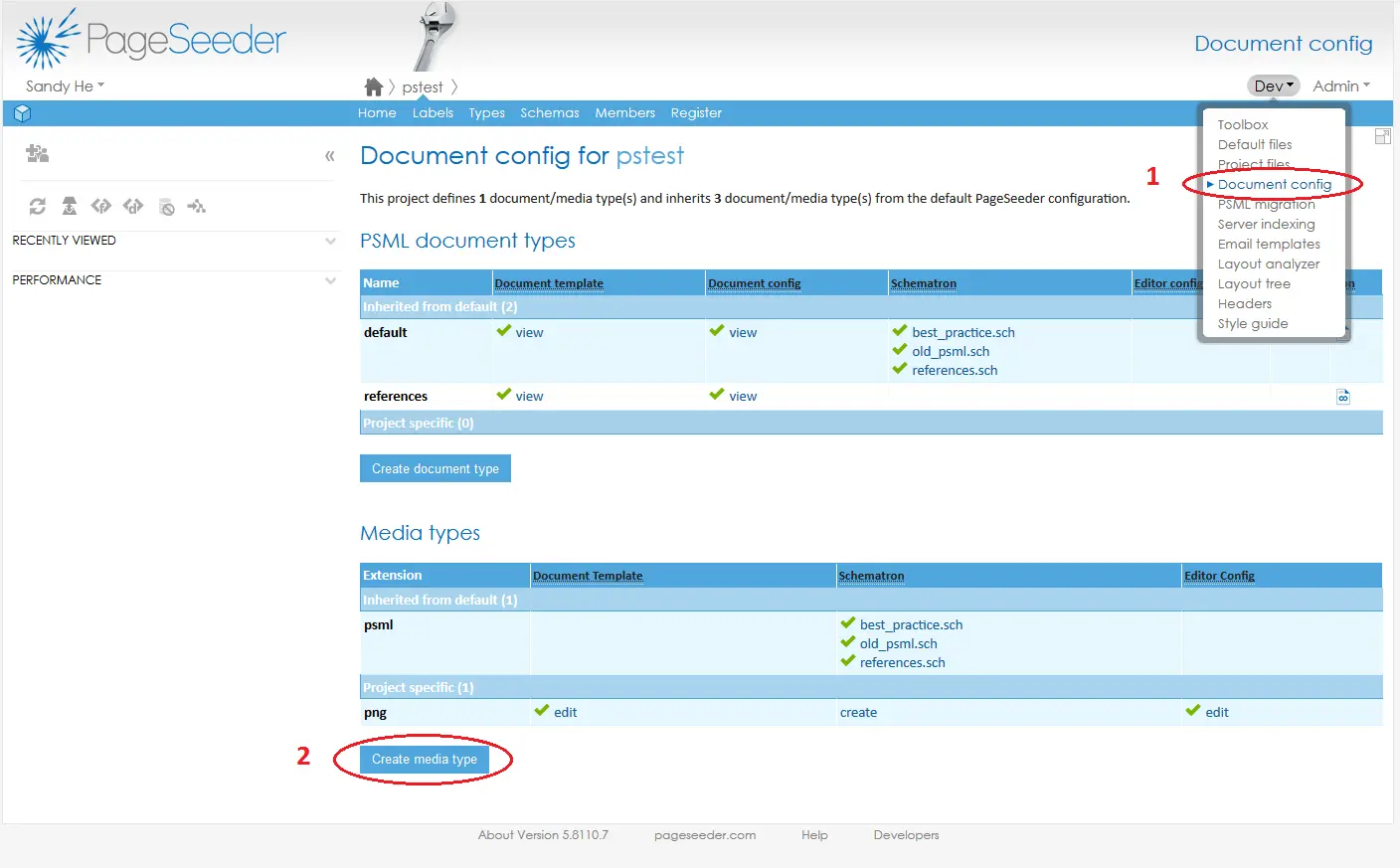
Use the interface to add support for .png images by either create or edit of the following two files:
media-template.psml
<document
level="metadata"
xmlns:t="http://pageseeder.com/psml/template">
<metadata>
<properties>
<property name="caption"
title="Caption"
value="" />
<property name="action"
title="Action"
value="" />
<property name="hi-res"
title="Hi-res"
datatype="xref" />
</properties>
</metadata>
</document>
editor-config.json
{
"PSMLMetadataConfig": {
"fields": {
"action" : {
"type": "checkbox",
"label": "Action",
"values": ["None", "Zoom", "Fullscreen"]
}
}
}
}
The caption and action properties and the editor-config.json file are not required for the image substitution. This is simply a convenient opportunity to illustrate how to configure an object for multiple metadata properties.
Edit image metadata
Ensure the following:
- Both the lo-res and hi-res versions of the image have been uploaded to a group in the correct project.
- The lo-res image has been referenced by document created using the correct template.
Then, view the lo-res image file and edit the Document info & metadata.
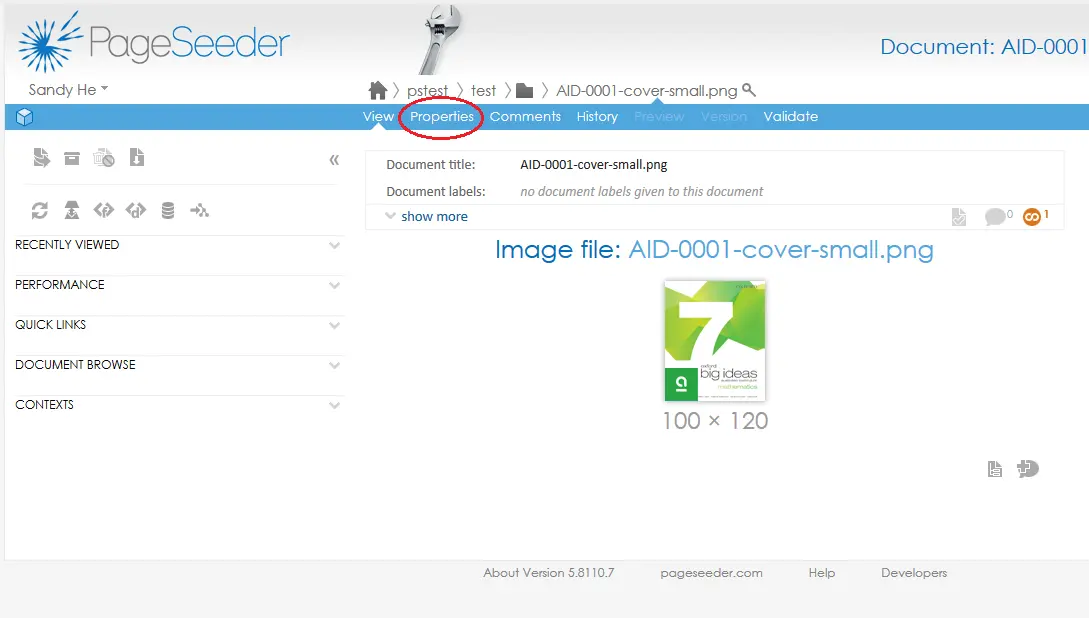
In the Document info & metadata panel, open the Metadata tab and select the property with the
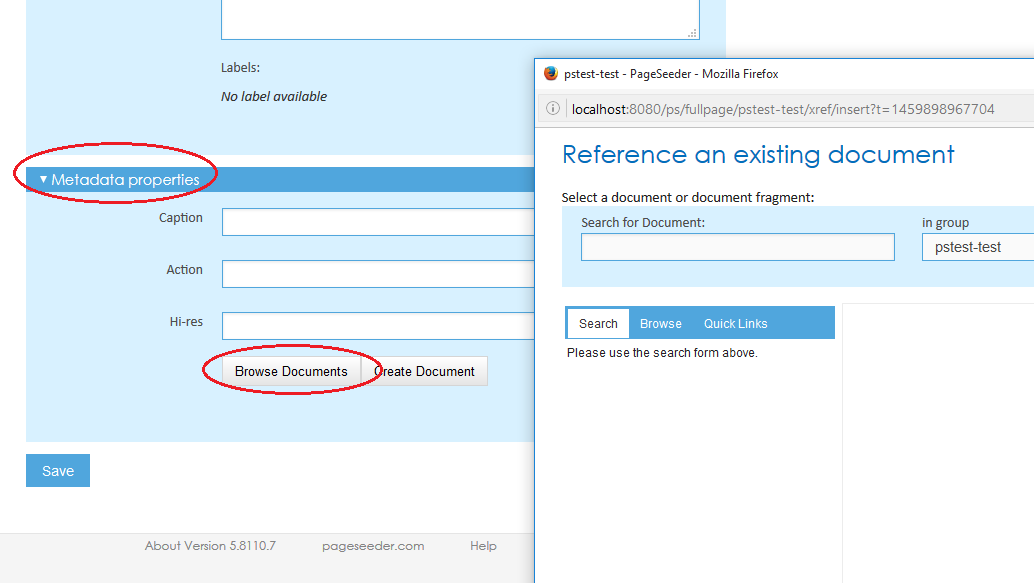
Follow these steps to complete the connection of the images:
- Edit the hi-res link.
- Select a 'Link Type' of 'Alternate'.
- Select 'Save'.
- Select 'Save'.
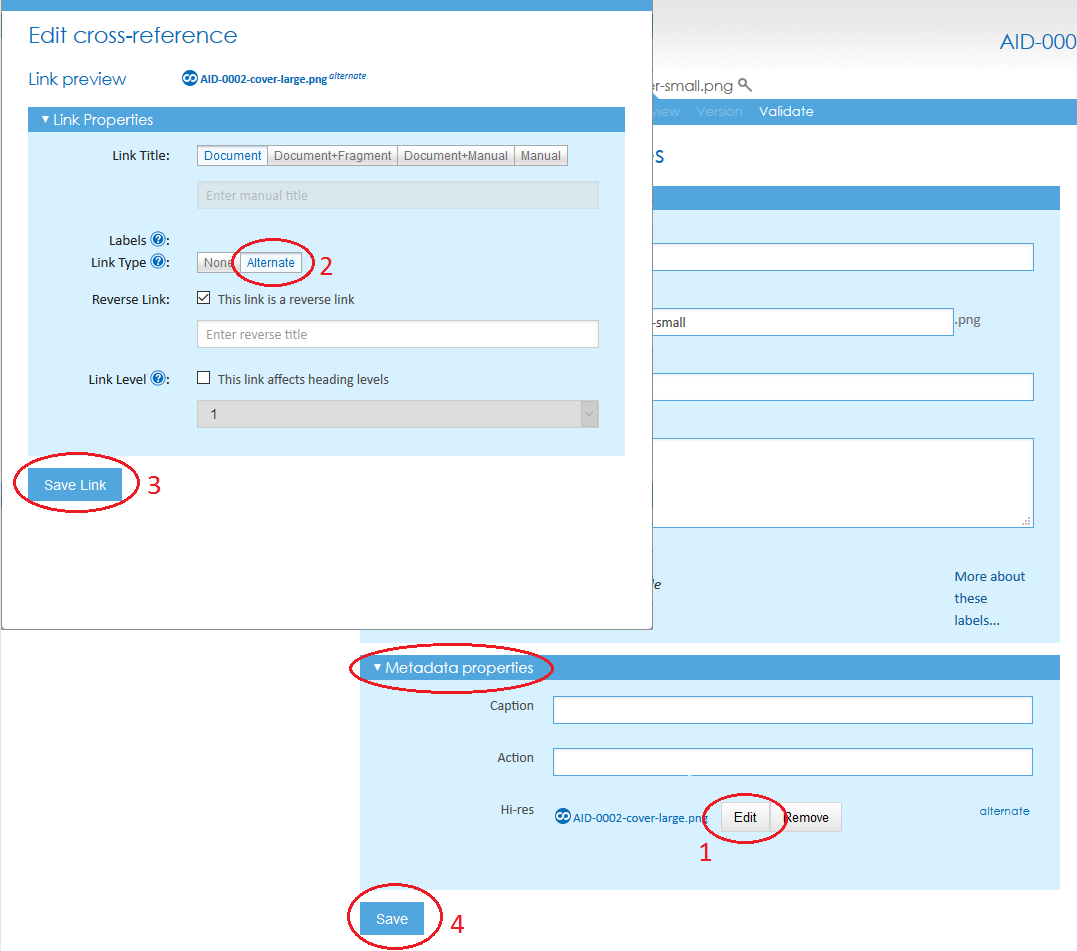
Configure the 'Exporting with Substitution' function
Follow these steps to log on to the Publish server:
- Select 'Toolbox' located under the Dev tab in the Developer perspective,
- Select 'Project files',
- Use an account with Administrator privileges.
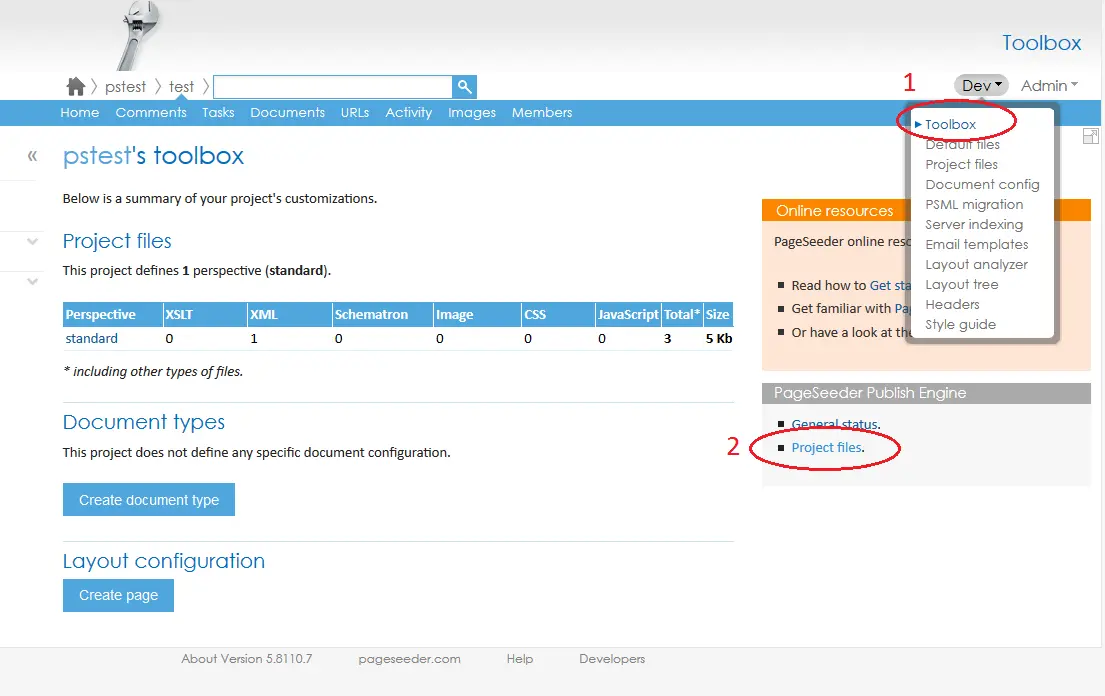
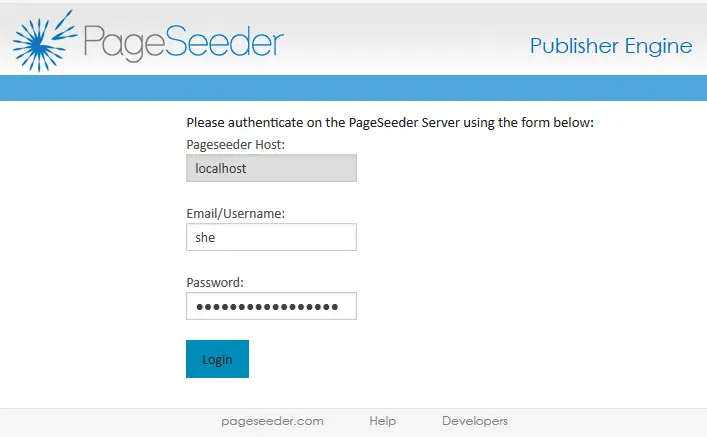
Once logged on to the Publish server, create the following location for the configuration file under 'Template':
[project]/document/psml/export
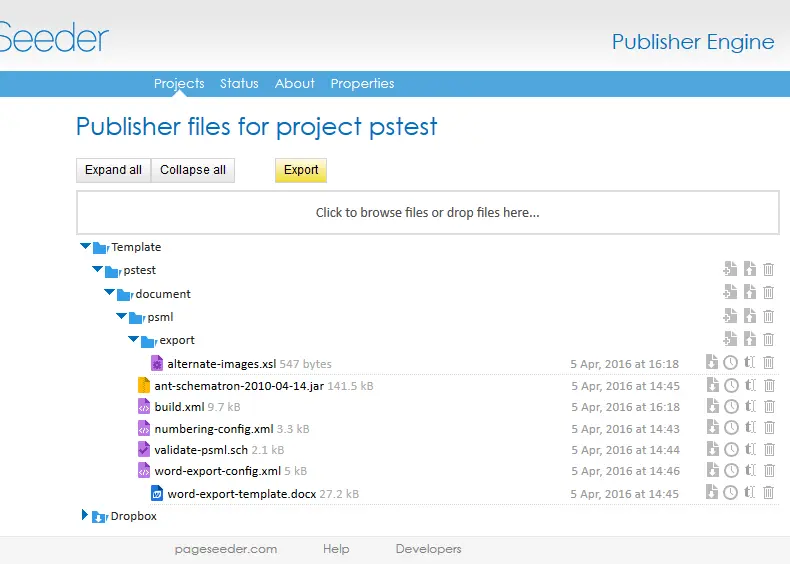
From the material downloaded from GitHub (see Prerequisites above), upload the following files to the export folder:
build.xml
alternate-images.xsl
numbering-config.xml
validate-psml.sch
word-export-config.xml
word-export-template.docx
ant-schematron-2010-04-14.jar
alternate-images.xsl – is the code that actually substitutes the images, see the following:
<xsl:stylesheet version="2.0"
xmlns:xsl="http://www.w3.org/1999/XSL/Transform">
<!-- change image src to alternate image -->
<xsl:template match="image[.//xref/@type='alternate']">
<image src="{.//xref[@type='alternate']/@href}">
<xsl:copy-of select="@*[not(name()='src')]"/>
</image>
</xsl:template>
<!-- copy all other elements unchanged -->
<xsl:template match="*">
<xsl:copy>
<xsl:copy-of select="@*" />
<xsl:apply-templates select="node()" />
</xsl:copy>
</xsl:template>
</xsl:stylesheet>
build.xml – has been modified so the following elements have been added to <ps:process> This initiates the XSLT and embeds the metadata:
<images embedmetadata="true"/> <posttransform xslt="alternate-images.xsl" />
Prepare publish config file for PDF and DOCX format
Through the user interface, in the admin menu for the project, select Template files and create the following folder:
[project]/publish
then upload the following file that should have been retrieved from Github in Step 3.
publish-config.xml

Test
To ensure that process is functioning as expected:
- Select the
Export icon for the document that contains the lo-res image. - Select the option labelled 'Create PDF with Image Replacement'.
- Click the 'Run' button.
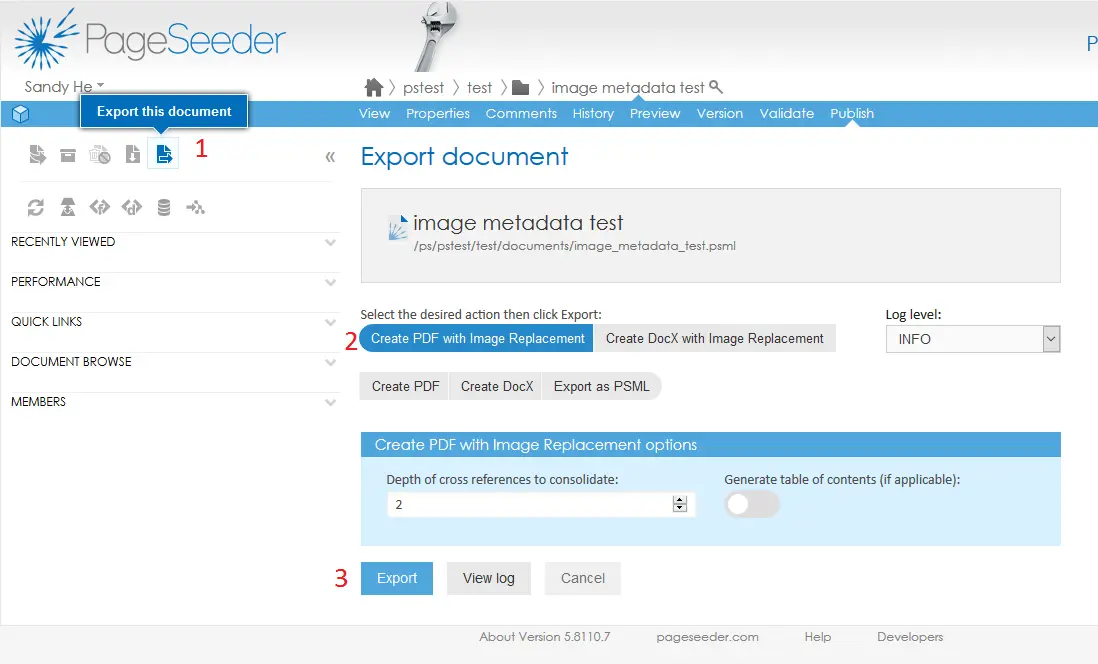
After completion, the PDF document features a hi-resolution image in place of the low-resolution image.
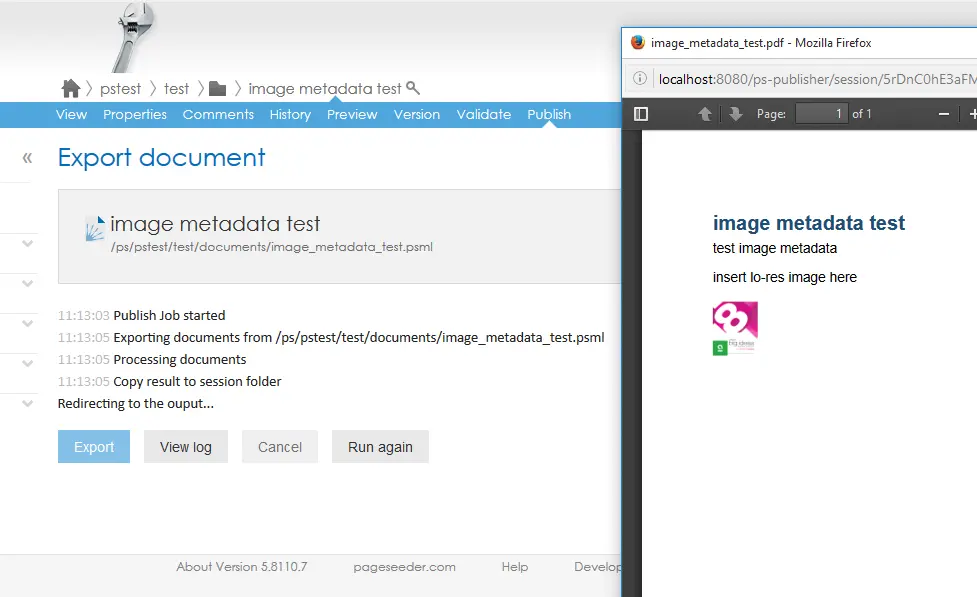
Validation
When substituting with hi-res images it might be useful to validate your images to ensure that all have hi-res alternatives defined. This can be done using schematron as follows:
- In PageSeeder, select the Documents page for the group containing your images.
- Select the Template configuration page.
- Click create under Schematron next to the
PNGmedia type. - Copy and paste the following Schematron code and click Save.
- Select the Documents page for the group containing your images again.
- Click the
Validate button at the top right of the page. - Select
.pngand click Validate (anyPNGimages without a hi-res alternative should be listed in the validation report).
<sch:schema xmlns:sch="http://purl.oclc.org/dsdl/schematron">
<sch:title>Rules for images</sch:title>
<sch:pattern>
<sch:title>Document</sch:title>
<sch:rule context="/document">
<!-- Must have hi-res alternative -->
<sch:assert test="metadata//property[@name='hi-res']/xref[@type='alternate'] or
.//reversexref[@forwardtype='alternate']">
No hi-res alternative defined.</sch:assert>
</sch:rule>
</sch:pattern>
</sch:schema>
This process can be repeated for other image types (e.g. .jpg, .gif).